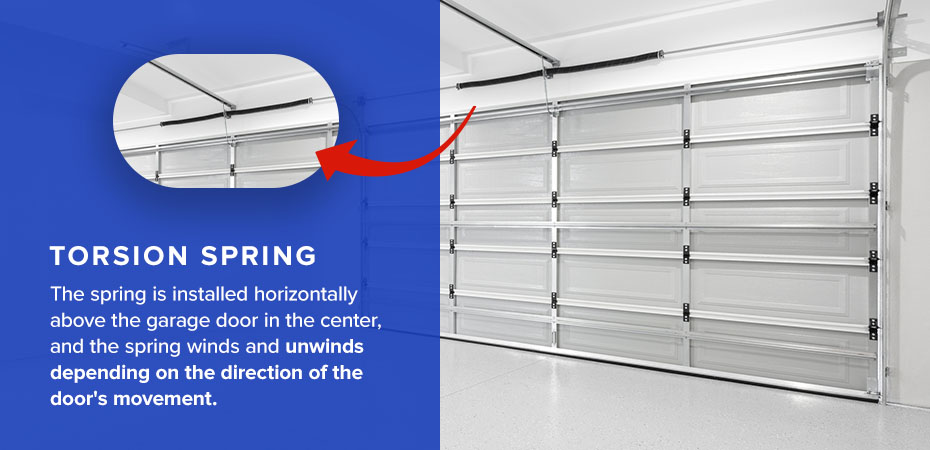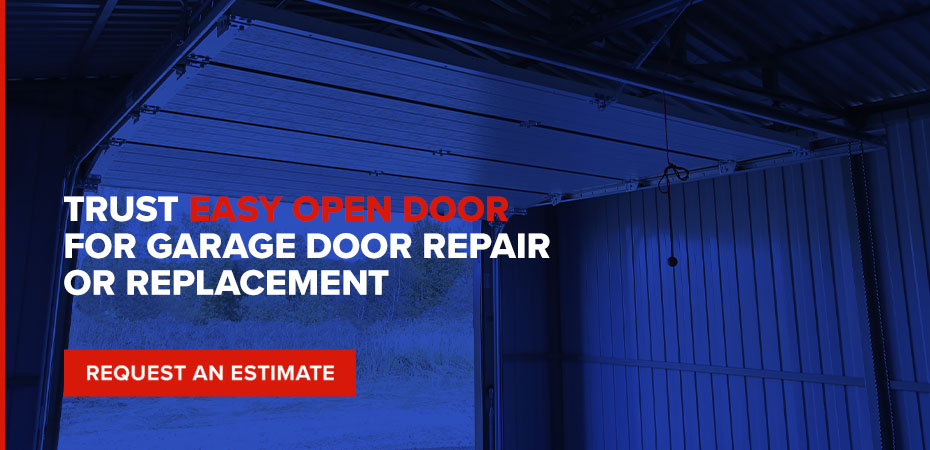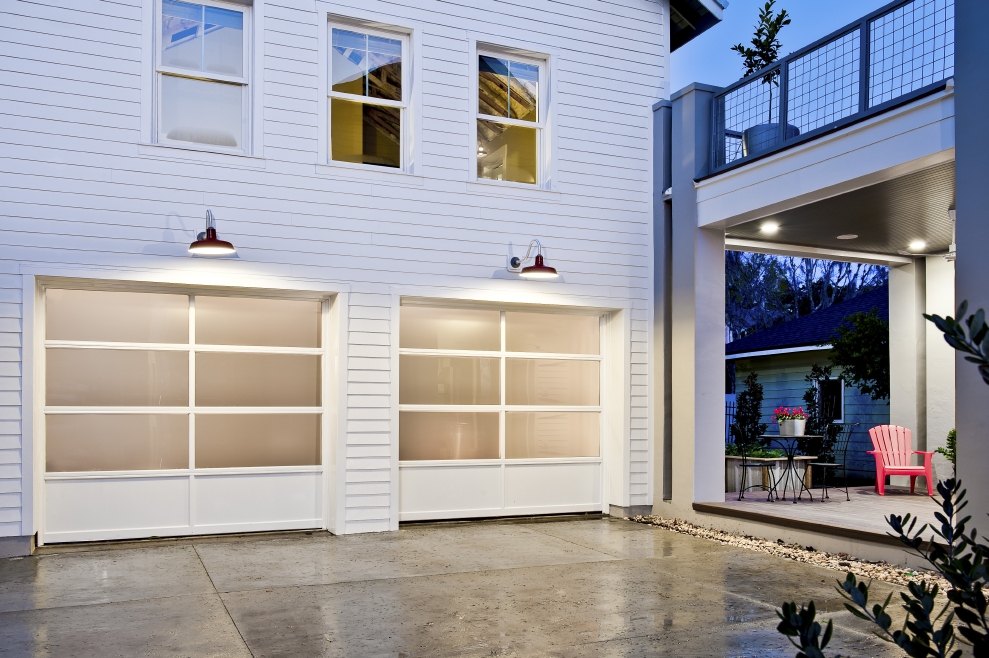Garage door systems may seem quite straightforward — they open and close at the press of a button. However, garage door systems consist of several parts that work together to lift and lower the door when you press the button. Despite the effortless action, these systems are pretty complex.
Understanding how the parts of your garage door system work can help you keep up with maintenance and troubleshoot issues as they arise. This handy guide explains the different parts of a garage door and their functions.
Table of Contents
How Garage Doors Operate
When the garage door opener device receives a signal to open the door, it prompts the motor into motion. The motor then directs the door’s movement by providing the initial force needed to start the drive system. The drive system connects the opener device to the garage door system. It consists of screws, chains or belts. The screws, chains or belts lift the door as rollers guide the door along the tracks. A spring system helps hold the weight of the heavy door by winding up. The opener device controls the movement to stop the door as it reaches the end of the tracks.
When the opener receives a signal to close the door, the drive system works in reverse to lower it while the spring unwinds to hold the door’s weight, preventing it from falling suddenly. In a closed position, the springs are stretched out, holding stored energy that helps lift the door the next time it opens.
Without an opener device, garage door systems can still function. However, you will need to lift the door manually to open it. The spring system will bear most of the weight as the rollers move along the tracks. When closing the door, you will pull the release cord, and the spring system will again hold the weight to help slowly lower the heavy door.
Even though these parts of a garage door are key components that move and guide the door, the overall system consists of several more parts.
What Are the Parts of a Garage Door System?
Garage door systems work with primary moving parts like the springs and the opener system, although the system needs several other essential parts to move up and down.
The Door Panels
The parts of a garage door exterior include the door panels and the components that hold them together. Residential garage doors are often made from wood, steel, aluminum or fiberglass. Some designs incorporate glass windows for aesthetics. The door panels are joined together by large leaf hinges and struts to reinforce the pieces. Most garage doors have two struts that run along the width of the door.
Rollers
Rollers are small wheels attached to either side of the door. The roller mechanism works with a metal rod attached to brackets on the door panel. A garage door has several rollers on each panel.
Tracks
The tracks run vertically on either side of the door. These tracks curve at the top to extend to the ceiling to hold the garage door in an open position. The tracks hold the rollers. Garage door tracks are typically made from durable galvanized steel.
Brackets
Hinges and brackets hold garage door systems together. While the hinges hold the garage door panels in place, several brackets work together to secure the entire system. Spring anchor brackets support the spring system. Brackets also support the opener device and hold the track system.
Belt, Chain or Screw Drive
There are three primary types of drive systems — chain, belt or screw. A chain drive mechanism incorporates a metal chain, while a belt system offers quieter and smoother operation. Screw drive mechanisms use a threaded steel rod that rotates.
Torsion or Extension Springs
There are two primary types of spring systems in residential garages — extension and torsion springs. While older garage doors can operate with extension springs, most modern systems use torsion springs.
Extension springs are located on the horizontal tracks. Extension springs attach to cables that run to the bottom of either side of the garage door panel. These springs stretch out when the door is closed and stretch back when the door is opened.

Torsion spring systems work slightly differently. The spring is installed horizontally above the garage door in the center, and the spring winds and unwinds depending on the direction of the door’s movement. Torsion springs also have cables that attach to the bottom of the door.
Drums and Cables
While cables attach the spring system to the door panel, the drums are pulley wheels that attach to the spring system on torsion spring garage doors. The drum rotates as the spring winds or unwinds and causes the cables to move accordingly.
Emergency Release Cord
The emergency release cord is a thick red string that lets you manually move the door when the opener device loses power or otherwise fails. This cord hangs down from the track system and has a handle on the bottom end.
Weather Seals
Weather seal strips are fixed along the sides and bottom of the door. These seals help the door provide insulation, prevent water from seeping in during bad weather and keep pests out.
The Automatic Opener Device
The parts of a garage door opener device include a motor, main gear and sprocket, and digital electronic board. They also include a wall control or remote button and a remote control. Modern systems also have photo-eye sensors, a safety feature that can identify objects in the door’s path to stop the door from closing.
The device also contains an opener rail that connects to the drive system, a drawbar that connects to the garage door, and an emergency release lever to disconnect the opener. Garage door openers usually connect to a primary power source and include a backup battery to power the device during power outages.
The Functions of Each Part
Each part of a garage door system plays an important role. While the brackets and hinges hold the system in place, the rollers and tracks allow the door to move up and down. The springs, cables and drum work together to lift and lower the door, while the driving mechanism works to set the system in motion. Lastly, the opener device operates the system by controlling the driving mechanism.
Trust Easy Open Door for Garage Door Repair or Replacement
The average garage door system opens and closes roughly 1,500 times every year, and many families use their garage doors as the primary entrance to their homes. While a quality garage door can last about three decades, these systems require ongoing maintenance and occasional part repair or replacement.
Easy Open Door can help you maintain your garage door system. Whether you need reliable maintenance and repair services or want to replace and upgrade your garage door, you can trust us with your garage door needs. We have decades of experience and have held the Angie’s List Super Service Award for 14 consecutive years.
Request an estimate or schedule a garage door service to restore or upgrade your garage door.



